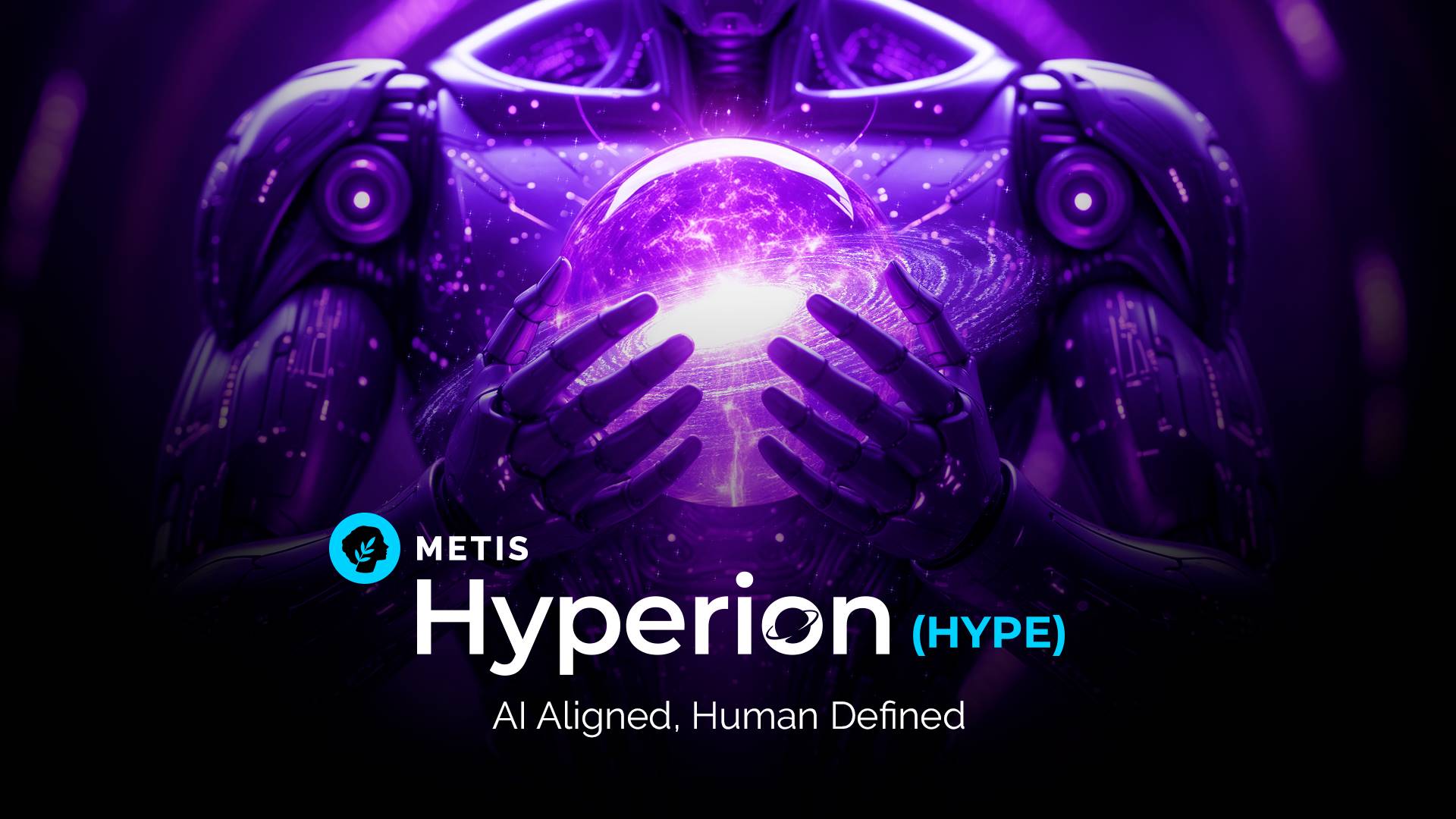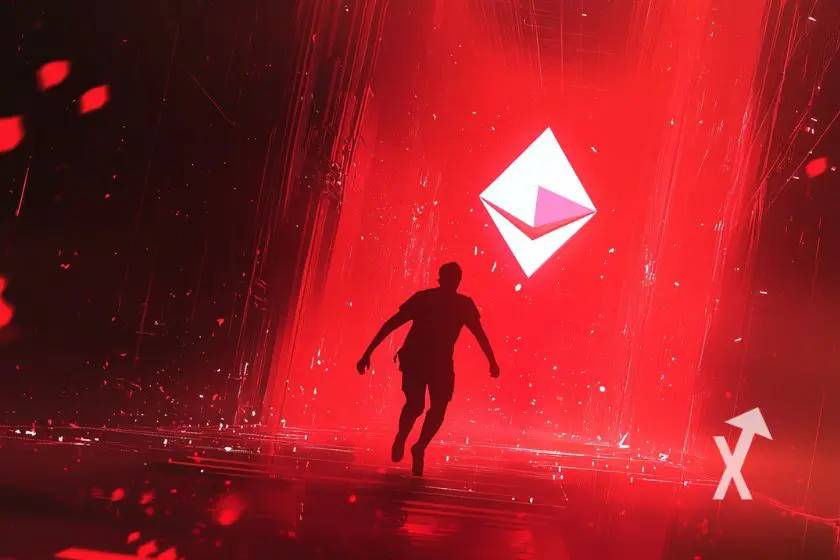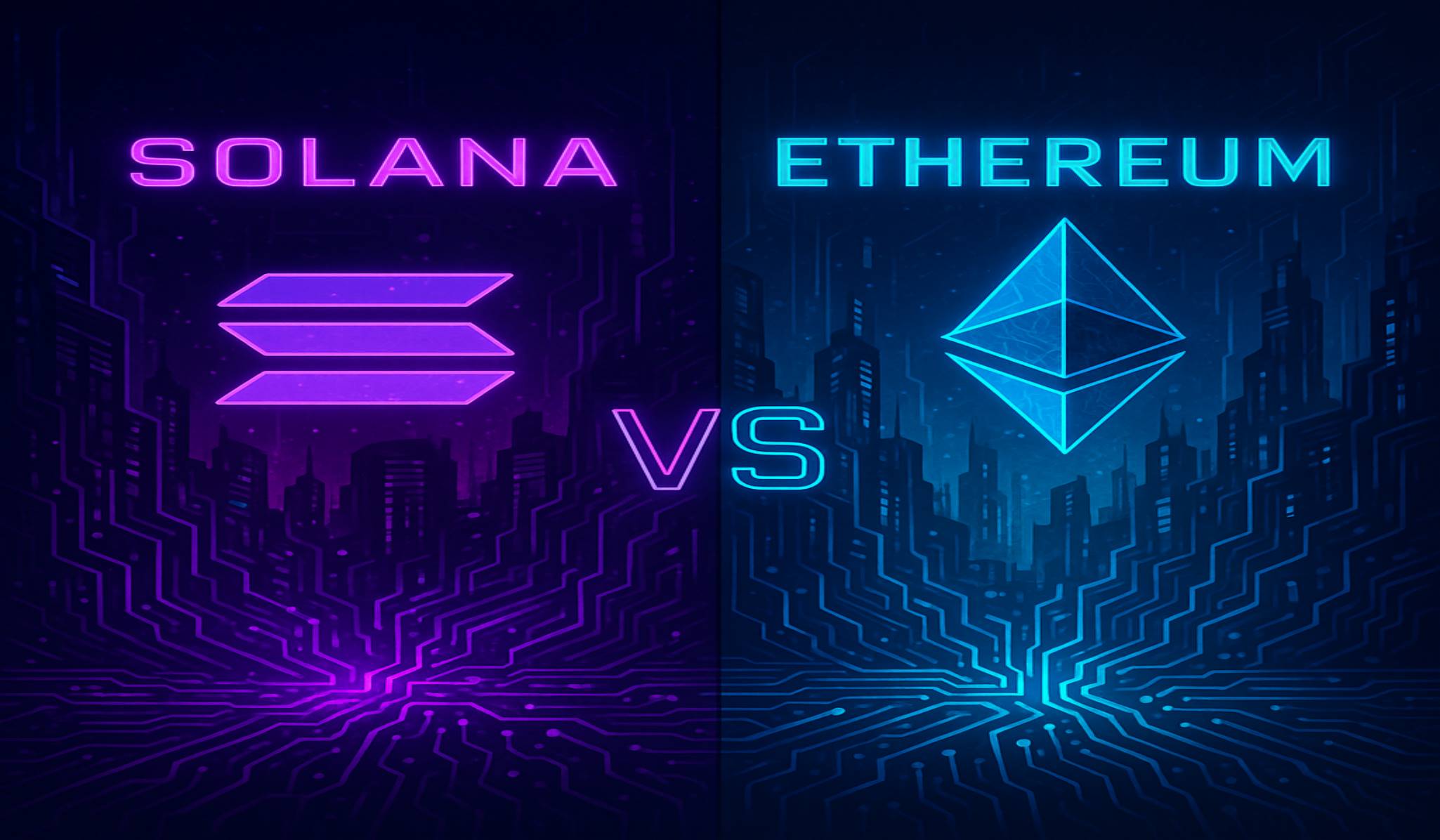Hyperion is launched, and Metis is no longer just an L2, but has transformed into a platform for "multi-chain infrastructure + AI dedicated chain."
Author: YBB Capital Researcher Ac-Core
1. Overview of Metis Hyperion
Metis is an Ethereum L2 ecosystem based on Optimistic Rollup, which early on launched the Andromeda mainnet. Compared to other L2 networks, its biggest feature is the decentralized sequencer, which gives transaction ordering rights to community participants. In March 2025, Metis officially announced a dual-chain strategy: launching the high-performance Hyperion chain on top of the existing general-purpose chain Andromeda. The former is positioned as a secure and reliable general L2, while the latter focuses on high-frequency, high-throughput, and AI-driven application scenarios. Hyperion is built on the Metis SDK, with its core being the new MetisVM virtual machine (compatible with EVM to support AI-optimized instructions), aiming to optimize scalability and decentralization while greatly enhancing transaction efficiency.
According to Metis' official introduction, Hyperion is committed to creating a "high-performance, AI-native" L2 network capable of achieving near-millisecond transaction confirmations and ultra-high transaction throughput, making AI-native applications (such as on-chain LLM inference and decentralized AI agents) possible. Overall, Metis provides complementary support for different application scenarios through its dual-chain architecture, with Andromeda emphasizing security and decentralization, and Hyperion emphasizing high performance and AI applications.
In summary, Metis' development roadmap can be summarized in two points: first, continuously improving the core L2 infrastructure, such as adding real-time data availability migration and fraud proof mechanisms in the Andromeda upgrade in May 2025, making it the industry's first "truly decentralized" Layer 2; second, moving towards modularity and multi-chain interoperability, lowering development barriers through the Metis SDK, and promoting multi-chain ecosystem development. The launch of Hyperion has, to some extent, reshaped the value logic of the METIS token: making Metis no longer just an L2, but transforming into a platform for "multi-chain infrastructure + AI dedicated chain."
2. On-chain LLM? What is the logic behind Metis' implementation?

Image source: Metis
2.1 AI Ecosystem Closed Loop: SDK, Hyperion, LazAI
As an Optimistic Rollup, Hyperion inherits the security model of both Metis and Optimism, mainly updating aspects of parallel computing, data availability, and decentralization, with a primary optimization direction in AI and high-frequency application scenarios. Specifically, Metis promotes ecosystem construction through the three major systems of Metis SDK + Hyperion + LazAI.
● Parallel Execution Engine: Traditional blockchains typically execute transactions in order, while Hyperion introduces parallel execution technologies like Block-STM, allowing independent transactions within a block to run simultaneously. By employing optimistic concurrency control and dynamic DAG scheduling algorithms, independent transactions in the same block can run concurrently, significantly increasing throughput;
● Decentralized Sequencer: The transaction ordering rights of Hyperion are shared by a multi-node network, rather than controlled by a single node or a few operators. The specific mechanism includes Leader Rotation and Encrypted Mempool combined with Proposer-Builder Separation (PBS) to prevent front-running and centralized interference;
● Data Availability: Hyperion plans to fully utilize Ethereum's new features and external DA services to ensure data availability. With the advancement of Ethereum EIP-4844, Hyperion (and Andromeda) will directly publish transaction data to L1 through blob transactions, inheriting Ethereum's security while reducing costs. According to official statements, Metis is also preparing to integrate EigenDA;
● Fraud Proof Mechanism: Hyperion continues to adopt the optimistic model but has upgraded its fraud proof. Metis early on committed to introducing a complete fraud proof mechanism and data availability scheme; its ReGenesis roadmap also proposed "executing the latest fault proof system from the OP Stack." In other words, Hyperion will adopt an interactive error correction mechanism: after the sequencer publishes a new block, "observers" in the network have a window period to submit challenges (e.g., a 7-day period) to prove the block is invalid. If such a challenge is successful, the malicious block will be rolled back, and the responsible party will be penalized.
In terms of AI native infrastructure: The Metis SDK allows users to build their own L2 or L3 blockchains, already integrating an upgraded version of EVM (called MetisVM) and parallel processing capabilities, along with a decentralized sorting mechanism. Hyperion is a high-performance AI dedicated Layer 2 built using this SDK, combining Optimistic Rollup, parallel execution, and distributed sorting to achieve near real-time transaction confirmations and on-chain AI inference. According to official claims, MetisVM improves transaction efficiency by about 30% through dynamic opcode optimization and parallel execution mechanisms. Meanwhile, MetisDB uses memory-mapped Merkle trees and concurrency control, achieving nanosecond-level state access, effectively eliminating storage bottlenecks. These technologies combined allow Hyperion to run AI inference tasks like large language models (LLM) directly on-chain, laying a strong foundation for AI contracts.
In terms of AI narrative project incubation: Metis is also actively incubating AI-related projects, such as the LazAI protocol. This is an open network focused on "trustworthy AI data assets," aiming to address the issues of data opacity and inconsistency in AI usage. LazAI leverages blockchain's verifiable computing and standardized mechanisms to create an open, transparent data market, ensuring that AI models use high-quality data and supporting cross-chain usage. Based on this protocol, Metis has also launched the Alith framework, a development tool specifically designed for AI agents on the blockchain. Developers can quickly write AI Agents on Metis using the Alith SDK and deploy them online. The official also provided a relatable example: users can complete DeFi operations like lending simply by sending commands in natural language through a Telegram chatbot, without needing to write smart contracts themselves. This design significantly lowers the barrier for ordinary people to use AI applications and makes developers' work much easier.
2.2 Compared to other L2s, what capabilities does Hyperion enhance for Metis?
Hyperion is still based on Optimistic Rollup, and Metis has built differentiated competitiveness through forward-looking technologies and strategic layouts: Hyperion and related technologies meet the performance needs of AI applications, while the dual-chain and SDK model balances general and specialized needs, and decentralized sorting enhances ecosystem trust. The differentiated competition with other L2s mainly reflects in aspects such as Hyperion architecture, dual-chain strategy, Metis SDK, and decentralized sequencer:
High-Performance Execution Layer: Metis Hyperion is a high-performance Layer 2 aimed at AI, officially claiming to achieve near real-time settlement and Web2-level response speed through Optimistic Rollup, parallel execution, and distributed sorting technologies. Hyperion introduces MetisVM—a virtual machine customized for high-frequency trading and AI tasks, featuring dynamic opcode optimization, parallel execution, and caching mechanisms, significantly enhancing smart contract execution efficiency. Additionally, Hyperion has designed on-chain inference support for AI, including dedicated precompiled contracts and execution engine optimizations;
Dual-Chain Strategy (Andromeda + Hyperion): Metis retains the original Andromeda chain as a general-purpose L2, continuing to provide stable infrastructure for applications like DeFi; at the same time, it launches Hyperion specifically to serve AI scenarios. This "dual network" architecture resolves the trade-off between generality and specialization: it avoids deadlock in homogeneous competition with other L2s while providing a dedicated space for AI applications;
Metis SDK and Developer Ecosystem: The Metis SDK is a modular toolkit for developers, integrating blueprints, building tools, and standard interfaces, allowing developers to quickly build custom execution layers or applications. The Metis SDK enables developers to rapidly deploy Layer 2/Layer 3 using mature modules, and facilitates smooth migration or interaction between projects on Andromeda and Hyperion, significantly improving ecosystem construction efficiency and interoperability;
Decentralized Sequencer: In 2024, Metis successfully launched the industry's first fully decentralized sequencer, transferring transaction ordering rights to community nodes and staking mechanisms. This mechanism achieves fault tolerance and censorship resistance through rotating consensus nodes and incentive token governance, completely eliminating single points of failure.
3. If Ethereum focuses on L1, how will Metis respond?

Image source: investx.fr
3.1 If the main chain does not distribute rewards, Metis will build its own reward factory
Assuming Ethereum will focus on its own L1 development (such as underlying consensus and sharding upgrades) rather than continuing to directly expand L2, how can L2 platforms like Metis maintain and expand their influence? In the All in AI strategic roadmap released by Metis, the current strategy appears to be a modular and multi-chain approach.
First, Metis' dual-chain architecture and MetisSDK provide the capability to build multiple dedicated chains. The launch of Hyperion marks Metis' transformation from a "single L2" to a "modular multi-chain infrastructure." Through MetisSDK, any team can quickly create customized blockchains like building blocks—configuring components such as parallel execution consensus, EVM-compatible layers, AI-optimized VMs, and on-chain storage. This means that Metis not only operates two chains but can also support more "industry-specific chains": such as AI computing chains, DePIN infrastructure chains, and gaming chains, each meeting different scenario needs.
Secondly, Metis emphasizes cross-chain interoperability and a collaborative ecosystem. The official roadmap and community communications frequently mention the introduction of cross-chain bridging and data/computation aggregation mechanisms. It is evident that Metis will integrate Chainlink CCIP, allowing assets and smart contracts to flow freely between Metis and other public chains. The Hyperion architecture also emphasizes "shared bridges + cross-chain interconnectivity" and proposes "decentralized data and computation aggregation," connecting AI applications with various data networks and computing resources.
The community is not only users but also direct participants and beneficiaries of the network's operation. By opening the sequencer role, anyone can become a block proposer through staking and receive sorting rewards. At the same time, Metis is planning to introduce an AI node operation incentive mechanism to encourage more developers to deploy inference services, providing on-chain AI capabilities.
3.2 Metis All in AI Strategy: How to Drive Ecosystem Development through AI
Looking directly at the issue: currently, using AI services on-chain, such as transmitting results through oracles, presents obvious centralization risks and performance bottlenecks. To address these issues, Hyperion and LazAI have collaborated to introduce an AI agent framework called Alith. Developers can use the Alith SDK to write "AI agents" and deploy them as contract modules on Hyperion. These agents can handle functions such as model selection, inference logic, and fault response, and other contracts on-chain can directly call them, enabling functionalities like chatbots, prediction tools, or DAO assistants. Through mechanisms like precompiled contracts, Hyperion incorporates AI inference into the on-chain execution process, and inference results can be fixed on-chain through logs, reproducible operations, or trusted execution environments, achieving verifiable trustworthiness. This retains the transparency of blockchain while meeting the computational needs of AI, truly promoting "AI on-chain."
Additionally, Hyperion's parallel processing and low latency are particularly suitable for AI tasks; as long as there are no conflicts between requests, they can run simultaneously, significantly improving efficiency compared to traditional L2 sequential execution. MetisVM has also been specifically optimized for AI, using Rust/WASM to enhance performance and supporting various inputs such as text and images, allowing AI models to run directly on-chain. This entire design aims to achieve what Metis calls "the first Layer 2 protocol capable of running large language models locally on-chain."
4. ETH Hyperion vs. Solana AI

Image source: Self-made
4.1 AI Competition Arena
The market enthusiasm for Crypto + AI has undoubtedly achieved great success on Solana, where the Solana community is also promoting open protocols like the Model Context Protocol (MCP), attempting to allow off-chain AI models to query on-chain data through standardized interfaces. QuickNode demonstrated how to set up a Solana MCP server, enabling "orthodox" AIs like Claude to access Solana blockchain information directly via RPC. However, most AI solutions on Solana run AI models off-chain, calling results on-chain.
As pointed out in "Solana and Base, Which Ecosystem is More Suitable for AI Agents?": "Currently, all models, including all agents, run off-chain; input data, training, and output information are not on-chain; neither EVM chains nor Solana/BASE support the combination of AI and contracts." Solutions like Solana + MCP have not truly "put AI models on-chain," but merely allow AI models to safely access on-chain data.
However, the interesting aspect of Hyperion is that it attempts to execute AI inference itself on-chain, which Solana has not achieved. If Hyperion realizes the first Layer-2 protocol that supports local execution of LLMs on-chain, it means Hyperion not only provides data interfaces but also directly offers on-chain computing power for AI models to run in MetisVM, with every computation step completed within the blockchain's execution environment. This design decentralizes AI more thoroughly than Solana's solution, as the AI inference results on Hyperion can be verified and traced on-chain, naturally resisting tampering and censorship; whereas Solana's MPC relies more on trusting external models and only ensures the security of data pathways.
Of course, Solana has a natural advantage in basic performance due to its high concurrency processing capabilities and mature GPU chip support architecture. Hyperion focuses on compatibility with the Ethereum ecosystem and ecological interaction: EVM compatibility, MetisSDK ecosystem, and METIS token liquidity.
Overall, Hyperion and Solana are not in direct competition but provide an alternative approach to blockchain + AI: Solana relies on its network performance + traditional LLM interfaces (MCP); Metis relies on its smart contract platform to launch native on-chain inference capabilities.
4.2 Is Hyperion the Universal Key to Unlock Ethereum AI?
To make a direct judgment, Hyperion is not the current universal key. Most of the so-called "AI + chain" projects are still at the conceptual level, with very few cases that can be verified as productive applications. Issues of model ownership and trust have yet to be resolved: how to trace the source of off-chain trained models and how to prove the correctness of their execution results on-chain? These are foundational infrastructure questions that need to be addressed.
The system design of Hyperion addresses some of the above pain points by providing support for AI inference at the protocol level, solving some computational power issues: parallel execution and MetisVM optimization greatly enhance on-chain computing capabilities beyond traditional L2, but this does not mean Hyperion solves all problems at once.
However, it can be confirmed that Hyperion brings new possibilities for Web3 AI and provides the Ethereum camp with leverage to participate in the AI narrative. It primarily addresses issues related to computational architecture and trust foundations: a large amount of parallel computing power, on-chain verifiable execution processes, modular toolchains, and native support for AI's special needs. These efforts create possibilities for the emergence of truly practical blockchain + AI applications (such as on-chain autonomous agents and high-frequency data analysis), adding substantial content to the AI narrative in the crypto space.
Reference content:
https://docs.metis.io/hyperion
https://www.bitget.com/zh-CN/news/detail/12560604756547
免责声明:本文章仅代表作者个人观点,不代表本平台的立场和观点。本文章仅供信息分享,不构成对任何人的任何投资建议。用户与作者之间的任何争议,与本平台无关。如网页中刊载的文章或图片涉及侵权,请提供相关的权利证明和身份证明发送邮件到support@aicoin.com,本平台相关工作人员将会进行核查。




